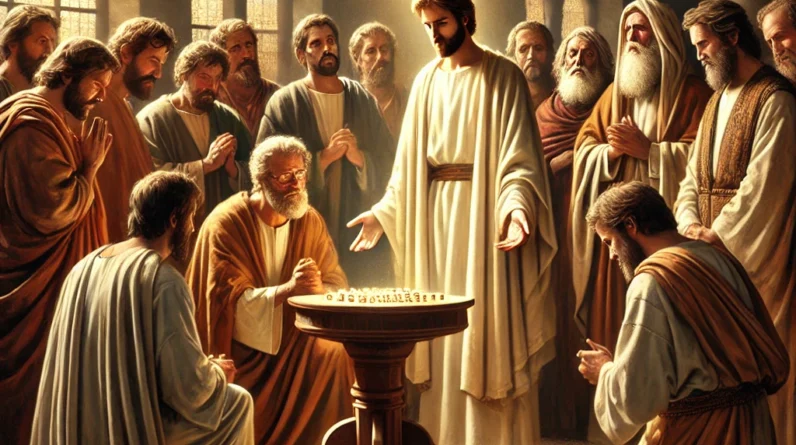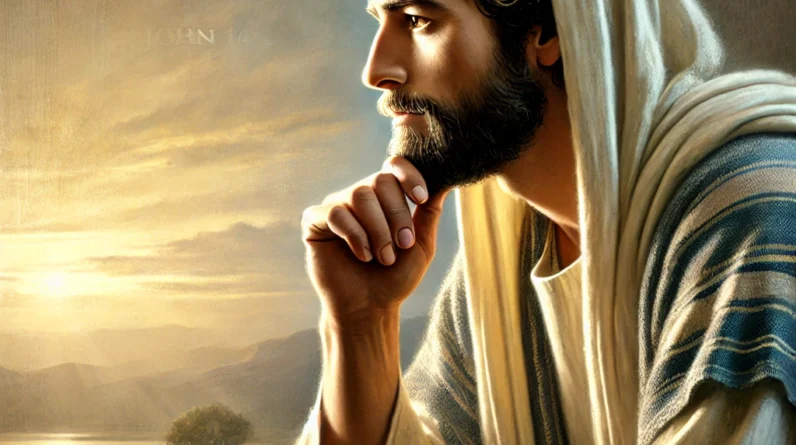Peter’s story is one of growth, grace, and bold faith. Here’s what you can learn from his life.
The Life and Lessons of Simon Peter: A Disciple’s Journey
Introduction
Have you ever wondered what it takes to transform from an average person with flaws and strengths into a cornerstone of a spiritual movement? The journey of Simon Peter, one of Jesus’ closest disciples, provides a fascinating insight into this transformative experience. As a significant figure in Jesus’ ministry, Peter’s life is peppered with both human frailty and divine purpose. In this article, we’ll explore Simon Peter’s background, his pivotal moments, and the lessons that modern believers can glean from his journey.
Who Was Simon Peter?
Full Name and Meaning
Simon Peter, originally named Simon bar Jonah, carries two names with rich significance. “Simon” is a common Hebrew name meaning “he has heard,” and the name “Peter,” given by Jesus, means “rock” in Greek, signifying Peter’s foundational role in the early church. In the Aramaic language spoken by Jesus, Peter is called “Cephas,” which also means rock.
Background
Before becoming a disciple, Peter was a fisherman, a profession he shared with his brother Andrew. They hailed from the village of Bethsaida and later operated their fishing business in Capernaum. Fishing, a demanding occupation requiring strength and resilience, may have shaped Peter’s robust and sometimes impulsive personality.
First Mention in the Bible
Peter makes his debut in the Gospels as his brother Andrew introduces him to Jesus. Andrew was a disciple of John the Baptist and upon hearing John’s proclamation that Jesus was the Messiah, he couldn’t resist sharing this discovery with Peter (John 1:41). It marks the start of an extraordinary spiritual voyage for Peter.
Calling to Discipleship
How They Met Jesus
Peter’s formal invitation to apostleship occurs on the shores of the Sea of Galilee. Jesus saw Peter and Andrew casting a net into the sea and called them to a new vocation; “I will make you fishers of men” (Matthew 4:19).
Immediate Response
Without hesitation or apparent doubt, Peter and Andrew left their nets, a decision reflecting both trust and urgency in following Jesus. Their immediate response illustrates the magnetic pull of Jesus’ call and the deep personal conviction required to leave existing security for an unknown future.
Role Among the Twelve
Among the disciples, Peter emerged as a prominent figure, often in Jesus’ inner circle along with James and John. This inner circle witnessed events like the Transfiguration (Mark 9:2-3), suggesting a deeper level of training for leadership roles in the early church.
Notable Events and Actions
Key Moments
Peter’s journey includes dramatic highs and lows. He walks on water towards Jesus amidst a storm but succumbs to fear (Matthew 14:29-31). At another candescent moment, Peter declares Jesus as the Messiah, earning Jesus’ commendation and a promise that upon “this rock” he would build his church (Matthew 16:16-18).
Strengths & Weaknesses
Peter’s courage is apparent as he steps out onto stormy waters and insists he would never deny Christ. Yet, he also struggles with fear and doubt, exemplified when he denies knowing Jesus three times during the crucifixion ordeal (Mark 14:66-72). These contradictions showcase the complexity of Peter’s character, offering modern readers a relatable figure who grapples with both faith and failure.

Their Role in the Early Church
What Happened After Jesus’ Resurrection?
Following Jesus’ resurrection, Peter becomes a bulwark of the early Christian church. His leadership is crucial during Pentecost, where he speaks boldly to the crowds, resulting in the conversion of about three thousand people (Acts 2:41).
Key Contributions
Peter’s impact is underscored by his epistles, 1 Peter and 2 Peter, written to encourage scattered believers facing persecution. His writings offer timeless counsel on themes of perseverance, faith, and the nature of Christ. Peter also performs miracles, like healing a paralyzed man at the temple gate, further affirming his apostolic authority (Acts 3:6-8).
Their Missionary Work
Peter’s missionary zeal takes him from Jerusalem to Samaria and beyond. He plays a pivotal role in accepting Gentiles into the Christian community, as shown in the conversion of Cornelius, a Roman centurion (Acts 10:44-48). His inclusionary approach sets a precedent for the diverse and expansive growth of Christianity across cultural boundaries.
How Did Simon Peter Die?
Martyrdom or Natural Death
According to early church tradition, Peter met a martyr’s death in Rome under Emperor Nero’s persecution. It is believed he was crucified upside down, at his own request, feeling unworthy to die in the same manner as Christ. This act of humility and conviction leaves a profound legacy on the Christian faith.
Significance of His Death
Peter’s martyrdom solidifies his role as a pivotal figure in Christianity. His steadfast faith, even unto death, serves as a powerful testament to his transformation and unyielding dedication to the gospel. His life and death provide a blueprint for resilience and fidelity under trial and tribulation.
Lessons We Can Learn from Simon Peter
Key Takeaways
Peter’s life is a canvas illustrating resilience, passion, humility, and redemption. He shows the power of transformation through grace—a reminder that failure does not disqualify faithfulness but offers a fertile ground for growth.
Personal Application
Modern believers can draw strength from Peter’s story by embracing their imperfections while steadfastly pursuing their spiritual journeys. Living authentically, moving beyond past mistakes, and dedicating oneself fully to following Christ are key takeaways from Peter’s life. Just as Peter was called from his nets, we too must be willing to leave our comfort zones and answer the call of our faith.
Conclusion
Simon’s journey from fisherman to foundational apostle exemplifies the potent transformation God can work in our lives through faith. Embracing imperfection, daring to step out of the boat, and accepting diverse people into our communities are part of the legacy Peter leaves. His life challenges us to ask, “How can we follow Jesus with the same dedication as Simon Peter?” Reflecting on his journey is an invitation to deepen your commitment and grow in faith.
Acknowledgment: All Bible verses referenced in this article were accessed via Bible Gateway (or Bible Hub).







